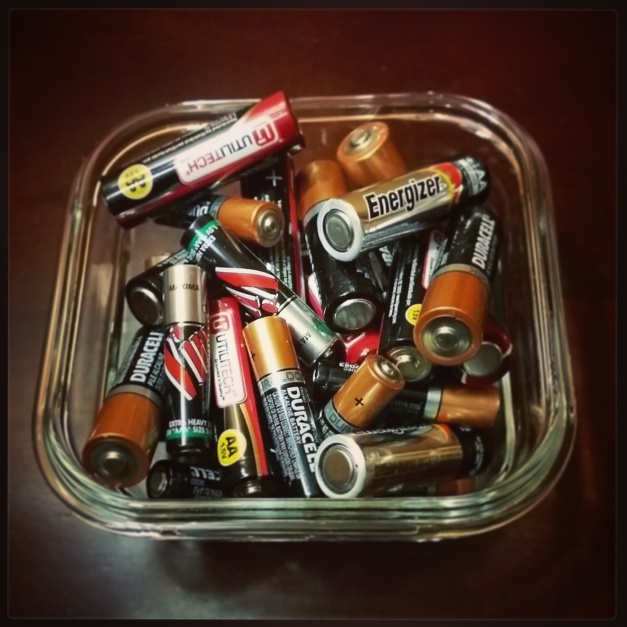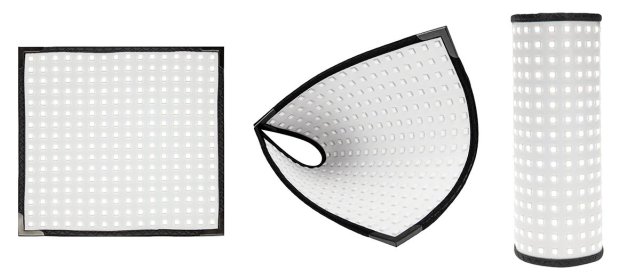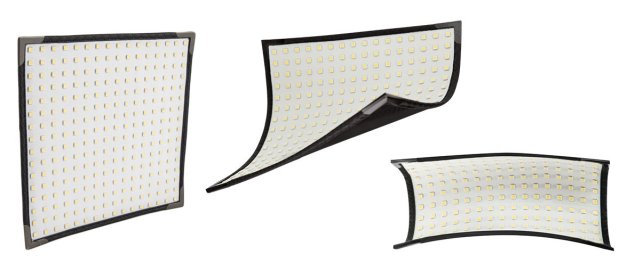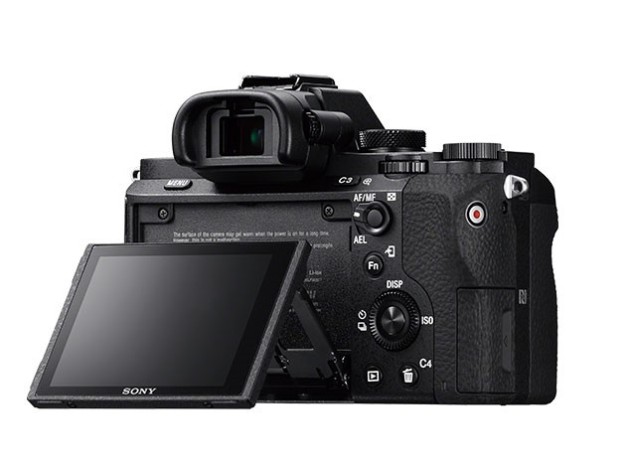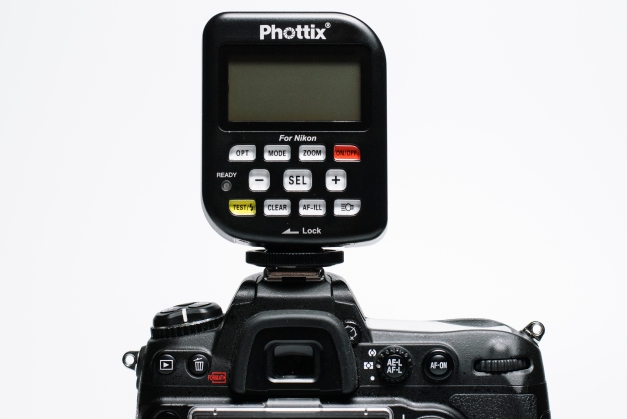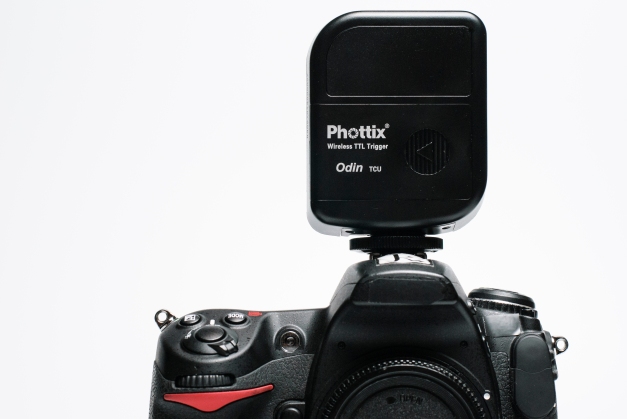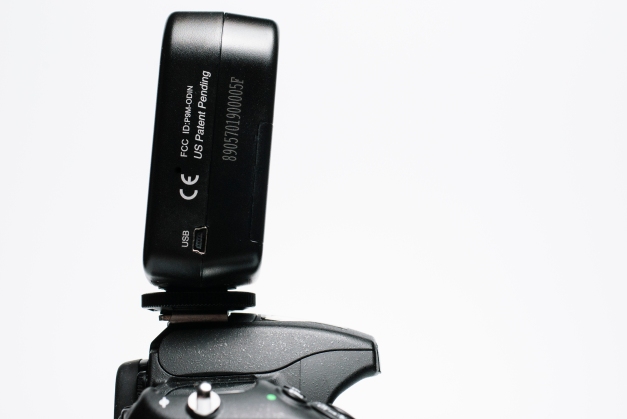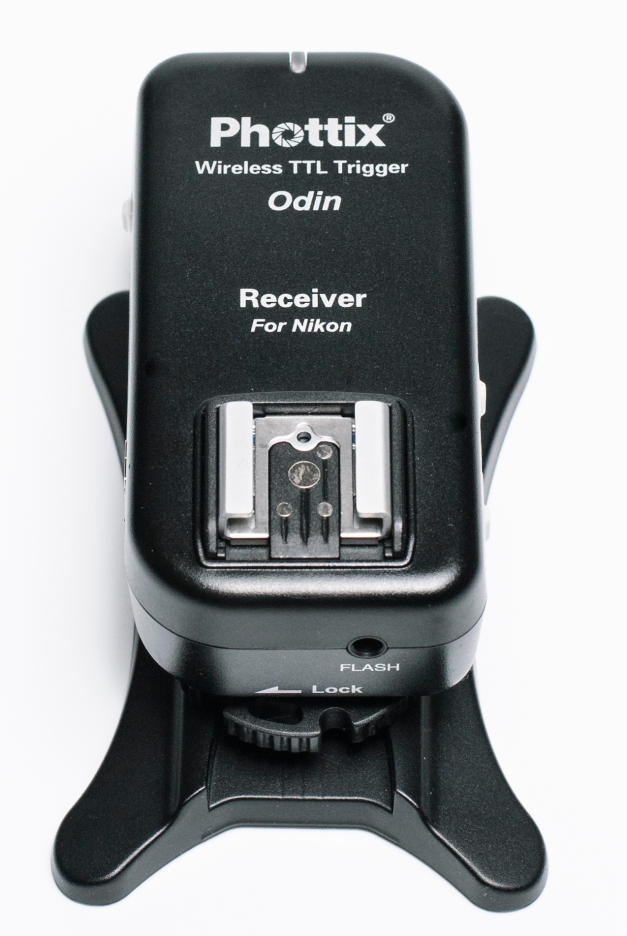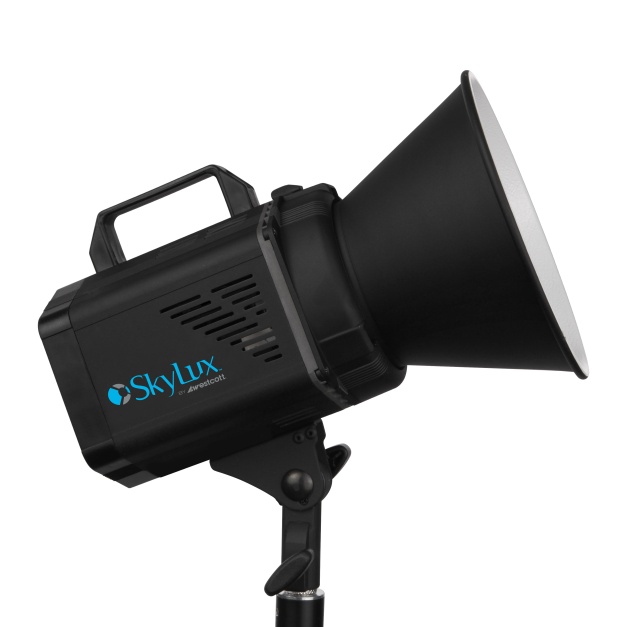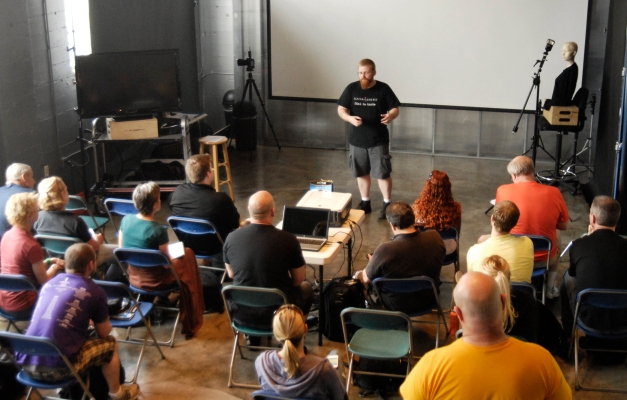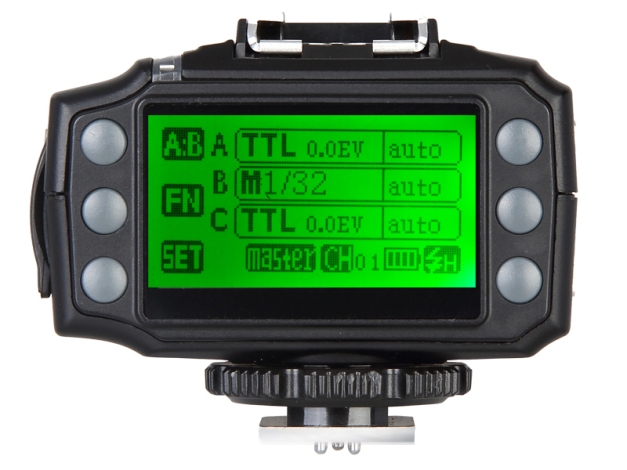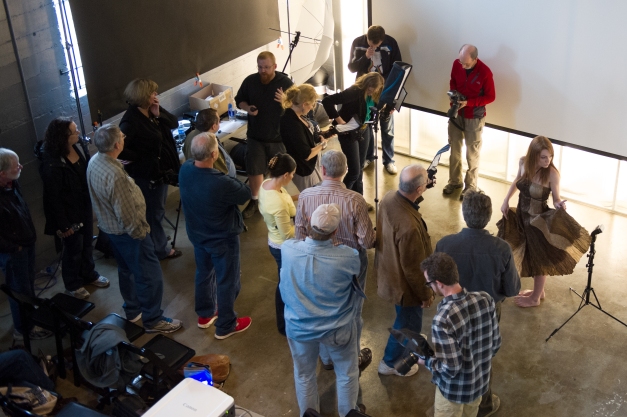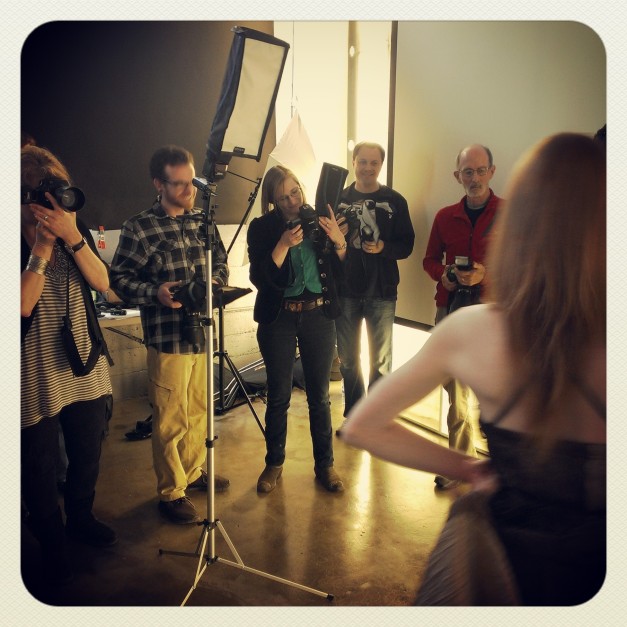Sunday, November 30, 2014
A note to manufacturers about batteries.
Just about every photographer on the planet that uses small flash units carries one type of battery with them at all times: AA’s. It can be frustrating to keep on hand a stock of several different size batteries let alone having your kit fully stocked with different sizes. Call me lazy but I want to keep things as simple as possible and use one style of power cell.
I think that there are many photography product companies out there today that are just missing the mark with their products by just one point, and that is the type of batteries their devices are powered by.
I understand the need and desire to produce products that are as compact and portable as possible, but I do not think that any photographer on the planet would object to increasing the size of said product to accommodate AA batteries.
It drives me completely batty having to carry multiple types of batteries with me. So, manufacturing companies let’s just pretend that AAA, CR123a, Coin, and any other size batteries that you can think of just do not exist. There are only AA batteries.
Saturday, November 29, 2014
Westcott Flex
WESTCOTT GAINS EXCLUSIVE DISTRIBUTION OF NEW FLEXIBLE LED TECHNOLOGY
FOR PHOTOGRAPHY AND VIDEO LIGHTING
After making a major splash in Europe this year at both the IBC Video Conference and
Photokina, Westcott Lighting is excited to announce the exclusive North American and Australian
distribution of this new cuttingedge LED technology. The Flex™ is a pliable, dimmable,
waterresistant LED mat for photography and video production that produces an outstanding
quality of light with an impressively high 95+ CRI (Color Rendering Index) in both daylight and
tungsten models.
“Westcott is very excited to be teaming up with the inventor and engineer of this new patented
technology. It’s exciting to see something that is not only unique in the area of LED, but also that
represents this superb quality of light in such a compact package.”President, Kelly Mondora
According to Westcott, this is only the beginning for the new technology. They are teaming up
with Top Pro video and photography experts to develop an entire system based upon controlling
and modifying this new lighting technology.
The fullybendable Westcott Flex™ features a 10” x 10” surface lined with 166 LED diodes and
outlined with a moldable ¼” black frame and weighing a mere 5 ounces. Its compact design
allows it to be easily concealed onset or location and allows for effortless travel.
The Flex™ LED mat will be available in both tungsten and daylight versions. Although extremely
compact in size, the output from the new LED is anything but small. The tungsten version offers
an impressive 1,600 lux output at 1 meter with a 98 CRI, while the daylightbalanced model
offers a slightly brighter 1,900 lux output at 1 meter with a 95 CRI. Each unit will include a
dimmer to adjust the light output from 5% to 100% for precise control.
Westcott promises innovative accessories and kits to follow the Flex™ LED’s initial launch.
These products include a variety of LED panel sizes, frame mounting systems, diffusion options,
battery operation, and much more. For more information on this gamechanging LED from
Westcott, visit fjwestcott.com/flex and sign up for exclusive announcements and availability
details.
Specifications
| Model | Westcott Flex™ Tungsten | Westcott Flex™ Daylight |
| LED Type | High CRI Array LED | High CRI Array LED |
| Power Consumption | 55W | 55W |
| Beam Angle | 140 degree | 140 degree |
| CCT | 3,200K | 5,600K |
| CRI | Max. 98Ra | Max. 95Ra |
| Lux @ 1M | 1,600lx | 1,900lx |
| Input Voltage | AC100~240V/50/60Hz DC : 12V~ 28V | AC100~240V/50/60Hz DC : 12V~ 28V |
| Dimming range | 5~100% | 5~100% |
| Dimensions | 9.85" x 9.85" x 0.315" 25cm x 25cm x 0.8cm | 9.85" x 9.85" x 0.315" 25cm x 25cm x 0.8cm |
| Weight | 150g / 5.29oz. | 150g / 5.29oz. |
Located just outside of Toledo, Ohio, with roots dating back to 1899, the F.J. Westcott Co. is currently a
leading innovator of photovideo lighting solutions for professionals and enthusiasts. They proudly team up
with top industry professionals to educate and inspire customers throughout the globe through live shootout
events, seminars, and more.
Find Westcott Online
Visit Us: www.fjwestcott.com
Twitter: http://www.twitter.com/WestcottCo(@WestcottCo)
Friday, November 28, 2014
Flash Facts - 0

Hey there kids, I am going to be starting a new ongoing series here on the Vanished Twin Blog. Can you guess what it is going to be called?
That's right Flash Facts is going to be all about your flash. Both on camera and off.
So, stay tuned for some fun and exciting tips and tricks and good old fashioned learning.
Thursday, November 27, 2014
Sony announces Alpha 7 II in the US
Sony Electronics, a worldwide leader in digital imaging, has today introduced another exciting addition to its full-frame α7 lineup, the α7II camera (model ILCE-7M2).
The new mirrorless model is the world’s first full-frame camera to feature 5-axis image stabilization1, allowing it to compensate for camera movement in five different directions to produce extremely sharp handheld images. The α7II camera is equipped with a 24.3 effective megapixel 35mm full-frame sensor, and adds 30% faster AF responsiveness, enriched video shooting capabilities, redesigned ergonomics and more.
“The new α7II is simply the latest example of the impressive innovation we’re bringing to the industry, particularly in the mirrorless space” said Neal Manowitz, director of the α interchangeable lens camera business at Sony. “We’re continuing to push the boundaries of what can be accomplished with a full-frame sensor, consistently delivering ‘world’s first’ technologies that no other cameras – DSLR or otherwise - can accomplish.”
New Image Stabilization Technology
The innovative 5-axis image stabilization on the new α7II detects and corrects camera shake along five axes during shooting, including angular shake (pitch and yaw) that tends to occur with a telephoto lens, shift shake (X and Y axes) which becomes noticeable as magnification increases, and rotational shake (roll) that often affects shots at night or when recording video. The 24.3 MP full frame sensor moves to accommodate all of these types of shake, with stabilization equivalent to up to 4.5 steps faster shutter speed of correction2.
Additionally, the 5-axis stabilization works cooperatively with Sony α lenses with optical steady shot (OSS) to provide maximum stabilization and clarity, while also performing admirably with Sony α A-mount lenses and third party lenses3 without on-board stabilization. Effects of the stabilization can be previewed via live-view on the LCD or OLED viewfinder of the camera.
Speedy, Accurate Autofocus with Hybrid AF
The new α7II employs a 117-point focal plane phase detection AF sensor with 25 contrast detection AF points, with approximately 30% faster AF responsiveness and 1.5 times more accurate subject tracking than the original α7 model4 thanks to a series of new algorithms for detecting subject distance and predicting motion. Additionally, AF and now automatic exposure (AE) is provided while tracking subjects during high-speed continuous shooting at up to 5 fps.
Enriched HD Video Functionality
The new full-frame camera shares the powerful BIONZ X image processing engine with several other high-end Sony cameras, and adds a variety of advanced video functionality including the addition of XAVC S5 codec, which records video at a high data rate of 50 Mbps with advanced compression for impressive video quality.
For the professional and prosumer customers, the α7II adds picture profiles for convenient in-camera tone adjustments and supports the S-Log2 gamma function which preserves a wide dynamic range. It also includes Time Code (useful for editing), Rec Control (for synced recording with external recorder) and dual video recording.
Design, Controls, Wi-Fi® and New Accessories
Ergonomically, compared to the original α7, the α7II model has a larger shutter button that has been moved closer to the front of the camera for optimal finger position. It is constructed with sturdy magnesium alloy on the top, front cover and internal panels for a sturdier, more solid feel in the hand, and boasts about a 40% faster start-up time compared to the α7 camera.
The new α7II camera is Wi-Fi® and NFC compatible and fully functional with Sony’s PlayMemories application available for Android™ and iOS platforms. New accessories designed for use with the new α7II include the VG-C2EM vertical grip and LCS-ELCB soft carrying case.
New α A-Mount 70-300mm F4.5 – F5.6 G SSMII Telephoto Zoom Lens
Sony has also introduced a new telephoto zoom lens for it’s α A-mount line, the 70-300mm F4.5 – F5.6 G SSMII (model SAL70300G2). Ideal for outdoor sports and wildlife photography as well as tightly cropped portraits, the lens features approximately 4x faster AF tracking than the current lens model 70-300mm F4.5 – F5.6 G SSM. It also has Nano AR coating to minimize flare and ghosting and improve rendering, and is dust and moisture resistant.
Successors to the α A-Mount 24-70mm F2.8 ZEISS and 16-35mm F2.8 ZEISS
Sony has also announced the development of the α A-Mount Vario-Sonnar T* 24-70mm F2.8 ZA SSM II and the Vario-Sonnar T* 16-35mm F2.8 ZA SSM II lenses. The second generation of these acclaimed lenses will improve upon the speed of AF tracking, reduce flare and ghosting and incorporate a dust and moisture resistant design.
Pricing and Availability
The Sony α7II full-frame mirrorless interchangeable lens camera will be available beginning on December 9th as body-only for about $1700, or as a kit with the 28-70mm F3.5 – F5.6 OSS zoom lens (model SEL2870) for about $2000.
The new 70-300mm F4.5 – F5.6 G SSM II telephoto zoom lens for α A-mount cameras will be available for about $1150 in February 2015.
Pricing for the Vario-Sonnar T* 24-70mm F2.8 ZA SSM II and the Vario-Sonnar T* 16-35mm F2.8 ZA SSM II lenses has not yet been determined, however target ship timing is Spring 2015.
Among 35 mm full-frame interchangeable-lens cameras, according to Sony research as of November 2014.
Based on CIPA standards. Compensates for angular shake (pitch and yaw). Measured using a Sonnar T* FE 55mm F1.8 ZA lens, with long exposure noise reduction off.
Some lenses are not compatible with 5-axis image stabilization.
Compared to the α7. Based on Sony’s internal metrics.
An SDXC memory card with a Class 10 or higher speed rating is required for XAVC S recording.
Wednesday, November 26, 2014
RadioPopper Photogenic Receiver
The Photogenic Receiver allows remote triggering and remote power control of most Photogenic brand lights. Simply attach the RP Photogenic Receiver to the port on the bottom of your Photogenic light and you're all set. The Photogenic Receiver is powered directly from the light and requires no batteries. The Photogenic Receiver is configured using a digital display on the front of the receiver.
-No batteries required
-Stop accurate power control
-Assigned to one of 4 groups/zones
-Supports all 16 RadioPopper channels
The Photogenic Receiver works with all PowerLight and Solair series Photogenic lights except those lights with manual sliders at the rear.
A Jr2 Transmitter is required to control power levels of the attached Photogenic light, though it may be triggered by any RadioPopper transmitter (Jr2, PX, JrX, Nano).
Panlight
Meet your new assistant. Free your flash, and open yourself up to the creative possibilities of a remote camera.
** $149 approx price in USD **
(see 'Rewards' for full details - Panlight will be shipping from both US and European locations, so we're able to offer free shipping from either!)
** Be the first to receive Panlight by backing us right here on Kickstarter **
Meet your new assistant…
Panlight is a light-weight pan and tilt device, giving you full directional control of your speedlight flashes, or Wi-Fi controlled mirrorless cameras. Using a small remote control, now you can change the direction your device points from up to 100ft away, 360 degrees left and right, and nearly 180 degrees up and down.

The problem with using off-camera flash mounted to a light stand, is to make a change to your flash's direction you have to return to your stand, lower the extension, make a change, re-extend, and hope you've got it right. Perhaps you need to repeat this process several times. Panlight means you never have to waste time doing this again, and helps you to capture images you would have missed with your flash pointing in the wrong direction.
- Quickly adjust your lighting - no more returning to your light stand
- Change where you're shooting if the action moves
- Fine tune light direction and spill, when working a distance from your flash
Use Panlight with your camera...
One of the most exciting uses for Panlight is the ability to work with a remote camera. Smaller, lightweight mirrorless cameras such as Fuji, Olympus and Sony models are becoming increasingly popular and are controllable via an app on your phone. So mount one on your Panlight and reach angles you'd never have been able to before.- Use a camera on the end of a fully-extended stand for high angle shots
- Place a camera where you're not able to shoot from, and be able to compose and shoot
- Add additional angles to you coverage by controlling multiple cameras.
WHAT THEY'RE SAYING

FAQ
- Takes 4 x AA batteries
- Works with all known speedlights and 3rd party triggers
- Can support mirrorless camera/lens combinations up to 2.2lbs
- Fits onto standardized 3/8" tripods and light stands
- Small remote fits comfortably in your pocket, or attaches to your person
- No issue with 3rd party triggers attaching to the bottom or side of your flash

Key Features:
- Universal fit - works with all hot-shoe flashes
- Amazing strength... Powerful motors to hold a flash & grids
- Accuracy - well controlled speed for precision control
- Multiple devices - control up to four Panlights from one remote
(see 'Rewards' for full details - Panlight will be shipping from both US and European locations, so we're able to offer free shipping from either!)
** Be the first to receive Panlight by backing us right here on
Why this idea?
As a professional wedding photographer for nearly 10 years, I'm a regular user of off-camera flash. I got frustrated needing to accurately set up gridded lighting under time pressures, so to reduce set-up time I wanted to create something to allow this. I also wanted to create a tool to let me reach higher angles for things like large group photos, and aerial scene-setting shots of some of the amazing locations I was working in.Risks and challengesLearn about accountability on Kickstarter
Panlight has already been through many rounds of prototyping to ensure it works perfectly and is compatible with all kinds of cameras, flashes, and 3rd party triggers/receivers. There was a huge amount of testing during 2014, and additional features were added throughout the design process to make Panlight an even better product.
The main risk to the project lies with fulfilment timings. We have an excellent manufacturer on board who is well briefed with the design and tooling requirements. However you are always in the hands of their schedule and component part deliveries, and this along with the December holidays approaching shipping times can shift outside of our control. For this reason we are setting very conservative, and realistic goals, and aiming to be fully stocked by March 2015, ready to start shipping reward items from then.
For more information on the Panlight or to become a backer head on over to their Kickstarter page
The main risk to the project lies with fulfilment timings. We have an excellent manufacturer on board who is well briefed with the design and tooling requirements. However you are always in the hands of their schedule and component part deliveries, and this along with the December holidays approaching shipping times can shift outside of our control. For this reason we are setting very conservative, and realistic goals, and aiming to be fully stocked by March 2015, ready to start shipping reward items from then.
For more information on the Panlight or to become a backer head on over to their Kickstarter page
C-Loop Hands on Review

The C-Loop is a camera strap mount from Custom SLR that screws into the underside of your camera and into your tripod socket. The mount itself rotates which helps to keep the attached camera strap from getting tangled up in itself or the camera body.
C-Loop's build is top notch. Part of the mount pivots up for a grip to tighten and loosen as needed and then swings back into position. When you look at the mount, the pivoting section forms the letter “C” in the Custom SLR logo when folded back into its original position.

Your camera strap will mount onto the two tabs located on the side of the C-Loop. Because there are two tabs there is a built in security against the mount failing and your camera falling.
The Split Strap by Custom SLR is by far the most comfortable strap I have ever worn. It has a unique cut away in the middle of the main body that distributes the weight you are carrying fantastically. It is also has a very effective silicone print that keeps it in place. The body connects to its straps via a snap in swivel for even greater flexibility.
Out and about with this strap is nothing but convenient and comfortable. Since the C-Loop is mounted to the underside of your camera, it rests in an inverted horizontal position that is parallel to your body. From this position it is very easy to just reach down and pull the camera up to grab your shot.

There is only one problem that I have with the C-Loop carrying system and that is if you ever want to put your camera onto a tripod you have to remove the strap mount first. This is not an uncommon problem with this type of sling. It looks like Custom SLR has come up with a solution to this problem in the as of yet unreleased M-Plate. The plate is going to retail for about $75 when it hits the market and by using it you will be able to mount a quick release tripod plate to the unit along with the C-Loop. I am looking forward to the M-Plate release.
Over all the C-Loop does a great job carrying your camera. It is easy to access and very comfortable to wear for long periods of time with the Split Strap. I would recommend this product if you are primarily shooting out and about with out a tripod. If you are shooting equally with a tripod and without you may find it a bit cumbersome to remove and remount the C-Loop often, so you might want to wait until the M-Plate is released and get them both.
Tuesday, November 25, 2014
Phottix Odin TTL Flash Trigger for Nikon
I have been shooting with the Odin trigger system from Phottix for a couple of months now and I have yet to encounter any issues with the system what so ever. To date this is my favorite trigger system.
The Odin trigger system is comprised of a Transmitter Control Unit (TCU) and the Receiver Unit. The TCU attaches to the hot shoe of the camera and the receiver mounts to the shoe of a TTL flash unit.
The TCU has a very easy and intuitive layout that is a breeze to navigate. Located on the back of the unit are all of the controls and the LCD display. The screen will show you all of your settings at a glance. All of the buttons are located under the display and are very responsive to the touch. Here is a breakdown of the buttons and their functions:
Option Button – This button allows you to toggle between the standard control mode and the TTL Ratio Mode.
Mode Button – Changes between TTL, M (manual) or --- (off) modes for the selected group.
Zoom Button – You can change the zoom mode of the flash from TTL (where the camera is auto responsive to the focal length of the lens mounted on the camera) to Manual where you set the flash head zoom length manually.
Power Button – Turns the TCU power on and off.
+/- Buttons – You use these buttons to set option levels.
Clear Button – When held down this button resets power levels back to zero.
Autofocus Assist Illuminator (AF-ILL) Function Button – With this function you can turn the IR AF assist beam of the flash on and off from the controller.
Modeling Light Button – This fires the flash continually for one second to simulate modeling light from the flash unit.
Test Button – Test fires the groups in order one at a time from A to C.
Ready LED Light – Not a button, but nested in the mist of all of the others, this is the status light indicator for the control unit.
On the front of the Transmitter Control Unit is the battery compartment. I am so happy that this controller takes standard AA batteries.
On the right side there is a mini USB port for future firmware updates for added functions and future camera compatibility.
On the underside is the metal hot shoe mount and locking ring.
The receiver unit also has a pretty simple layout. On the top of the unit is the metal Hot Shoe Mount and status LED light.
Over on the left side is the Channel selection switch where you can choose from channels one through four, a Mini USB port, and a 5V DC power Port.
The right side of the receiver has the power button and Group selection switch that allows you to choose from group A, B, or C.
A 3.5mm Output port is the only thing on the back of the unit. On the underside is not only the Cold Foot mount with locking ring but also a ¼” female thread for mounting the receiver on a light stand.
To get up and shooting with the Odin all you need to do is attach the TCU to your camera, connect a TTL compatible flash to the receiver, and turn it all on. As long as all of your channels and groups are synced, you are good to go.
Now you can use either TTL or manual flashes with the Odin trigger system. If you want to be able to use wireless TTL or have remote power level control, you have to use a compatible TTL flash. When I tested this system, I used the Mitros TTL flash for Nikon from Phottix, a Nikon SB-910, a LumoPro LP160, and the new LumoPro LP180. All of the flashes performed flawlessly with the Odin. The power levels of the TTL flashes could be controlled remotely and the other manual flashes fired every time without fail. The Odin system was able to handle multiple flashes from different manufacturers in both manual and TTL modes without any problems whatsoever. Please note that only the TTL flashes were able to be used in TTL mode. The Odin does not make a manual flash a TTL flash.
Another great future of the Odin trigger system is its backward compatibility with the Phottix Strato and Strato II series flash triggers. As the Strato triggers are manual only flashes, they will not transmit TTL data or have remote power level control; they will function just as manual triggers with the Odin system. If you have some of the Strato or Strato II triggers, then they can be integrated into the Odin system as manual triggers.
Something a little different for Nikon shooters is the A:B Ratio functions. When you hit the Option button on the back of the Transmitter Control Unit it brings up the TTL Ratio screen. If you hit the Select Button, the TTL Ratio scale is highlighted so you can adjust the A:B ratio by hitting the + or – buttons. There is also an exposure compensation option as well to help dial in your flash exposure to your personal taste. The Ratio function is pretty easy to use and if you are a TTL shooter with multiple flashes then this is a very simple option for you.
By far my favorite feature of the Phottix Odin is the FP High Speed Sync mode! I love the fact that I am no longer restricted to 1/250 of a second shutter speed. In fact I have the High Speed Sync mode always activated, so that when I want to cut just a bit more of the ambient light I have that option ready to go. This function falls into the remote power control category in a manner of speaking. In order for the FP High Speed Sync Mode to function you need to be using a TTL compatible flash unit. So, in my testing set up with the Mitros as my main light I was able to get all the way up to 1/8000 of a second shutter speed. However when I used my LumoPro LP180 I was not able to get a fast shutter speed than 1/320 of a second due to the fact that the LP180 is a manual flash and is not capable of some of the more advanced functions that the Odin offers.
Is the Odin from Phottix the perfect flash control system? I can definitively say that it is the greatest trigger system that I have ever put on my camera. It is everything that I could ask for: great design and build, radio transmitter and receivers, remote power control, and FP High Sync Mode just to name a few of the available options. In the few months that I have been using the Odin system I have yet to be let down by it. It is a rock solid trigger system that has proven itself time and time again. I simply cannot recommend this trigger system enough.
For more information on the Odin and products from Phottix visit their site at http://www.phottixstore.com and also read their blog http://journal.phottix.com. You can also find Phottix on:
FaceBook - https://www.facebook.com/pages/Phottix-Professional-Photo-Accessories/107825772585728
Twitter - https://twitter.com/phottixjournal
Flickr - http://www.flickr.com/groups/phottix
Skylux LED from Westcott
The next big thing in LED studio lighting is here.
Meet the SkyLux from Westcott. The first daylight-balanced studio LED with a CRI Rating of 94+ that allows photographers to utilize their favorite modifiers with the addition of a single Bowens Mount Speedring.
It's all in the design.
The SkyLux is a beautiful, full-color spectrum of light housed in a high-quality, compact, all-metal unit, which embodies a unique design with a flat front panel to protect the LED light source. Meaning, there's no protruding bulb or globe to shatter.
Built to use modifiers of all sizes.
The durable construction allows photographers to utilize their largest modifiers, like the Westcott 7' Octabank, with the simple addition of a Bowens Mount S-Type Speedring. The Bowens S-Type mount allows for the usage of softboxes, umbrellas, snoots, barn doors and gels.
Built-in diffusion panel.
The built-in diffusion panel allows photographers to shoot without adding a modifier and still achieve a beautiful, soft, and consistent output.
Recessed LED.
The frosted and diffused LED source is recessed for a shadow free output.
LED impact resistance.
The LED source plate is spring mounted to ensure protection of the LED's if impact should occur.
Simple & easy to setup and use.
Control the output of the SkyLux from 30% to 100% with the rear seamless control dial.
Keeping things compact.
The accompanying external ballast aids to minimize the size of the SkyLux unit by moving large components away from the SkyLux housing.
Extended cables.
Extended cables ensure a versatile and mobile SkyLux unit in the studio.
Long lifespan.
Unlike units utilizing halogen or tungsten bulbs, the SkyLux gives off little heat with it's unique LED design and has a lifespan of over 50,000 hours.
Internal fan.
Photographers will find an internal fan to keep the unit cool, but don't worry about the sound for video. The SkyLux has virtually zero sound while in operation. The quiet fan and flicker free LED technology is a perfect setup for videographers.
Metal construction.
Solid, all-metal tilter-bracket and umbrella mount minimizes the number of hardware components to carry around.
It's all in the details.
An umbrella hole can be found in the supplied parabolic reflector allowing the SkyLux to be positioned directly in the center of your umbrella-framed modifier.
Product Specifications
| SKU | 4850 |
|---|---|
| Warranty | One year against manufacturer defect |
| Material | All-metal construction |
Item Specifications
| Color Temperature | 5500K |
|---|---|
| Mount | Built-in Tilter Bracket |
| Lux | 2250 Lux at 6' (1.8m) |
| Lamp Type | LED Array (94 CRI) |
| Footcandles | 209 at 6' (1.8m) |
| Dimming Control | 30%-100% |
| Beam Angle | 60.1-degrees |
| Lifespan | Over 50,000 hours |
| Softbox Mount | Bowens S-Type Mount Speedring (sold separately) |
| Power Cord | 20' (6.09 m) attached |
| Reflector Diameter | 4.84" (12.3 cm) |
| Length: Light Head | 10.8" (275 mm) |
| Width: Light Head | 4.8" (124 mm) |
| Height: Light Head | 8.5" (124 mm) |
| Weight: Light Head | 4.2 lbs. (1.9 kg) |
| Length: Ballast | 10.2" (260 mm) |
| Width: Ballast | 3.5" (89 mm) |
| Height: Ballast | 2.0" (51 mm) |
| Weight: Ballast | 3.3 lbs. (1.5 kg) |
| Packaged Width | 11.8" (299.4mm) |
| Packaged Height | 11.6" (293.4mm) |
| Packaged Depth | 8.4" (214.4mm) |
| Packaged Weight | 7.5 lbs. (3.4kg) |
Package Contents:
(1) Skylux LED light head with built-in Tilter Bracket
(1) Metal Ballast with Carry Case
(1) Silver Reflector
(1) Power Cord
(1) Protective Travel Cap
(1) Instruction Manual
Phottix Luna Beauty Dish and Softbox
Phottix Luna Beauty Dish and Softbox released
Phottix Luna Beauty Dish
Softboxes are excellent light modifiers – but let’s face it – assembling them is time-consuming. Standing outside on a windy day trying to assemble a 1 meter Octa is a challenge.
Beauty dishes provide unique lighting – but who wants to lug a beauty dish on location? They’re bulky and cumbersome.
Making your life easier, Phottix announces the new Luna series of softboxes and beauty dishes.
The Luna series uses folding and locking fiberglass rods and an integrated speed ring to take the hassle out of assembly and transportation. Where a traditional octa softbox might take 10 minutes to assemble – the Phottix Luna 110cm Octa can be ready-to-use in 90 seconds.
The Phottix Luna Beauty Dish uses a similar principal. Unlike traditional metal dishes, the Luna dish uses folding and locking fiberglass rods to make it compact and easy to transport without sacrificing on the quality of light.
Phottix Luna Octa Softbox
Eric Younkin, a Texas-based wedding photographer and Phottix Pro Team member says of the new Luna Beauty Dish:
“…the Beauty dish is all I hoped for and more. The quality of light is even and focused with beautiful fall off. I used it yesterday on one of my boom stands straight away above a model and got some amazing results! Love the design and the fact that it’s portable and collapsible. Once again, beautiful stuff!”
Both Luna Softboxes and Beauty Dishes come standard with a Bowens-compatible mount (great for use with the Phottix HS Speed Mount and hot shoe flashes like the Phottix Mitros). Compatible mounts for Elinchrom, Profoto and Balcar can be easily swapped out, making the Luna series useable on many popular studio lights.
Rogue Large Soft Box Kit
The popular Large FlashBender and Diffusion Panel are now available in a new Rogue Large Soft Box Kit. Included in this kit are the Large FlashBender Reflector, Large Diffusion Panel and the new Large Silver/Black Attachment.
Use the FlashBender Reflector to bounce, flag, snoot, and shape the light from a small flash. Attach the Diffusion Panel to create a low profile soft box. Or attach the Silver Reflector to add more contrast and increase light output.Contents:1x Large FlashBender Reflector ($39.95 Retail)
1x Large Diffusion Panel ($19.95 Retail)1x Large Silver/Black Reflector Attachment ($14.95 Retail)



Large Soft Box Kit Price - $64.95
Save $10.00 off the individually priced pieces.
Visit the Product Page for additional details or Buy Now.
To find a local dealer visit our Dealer Locator.
Already own the Large FlashBender and Diffusion Panel?
You can buy the Silver/Black Attachment separately for $14.95 - Click HERE.
Debao SU-800 Nikon Wireless Speedlight Commander / Flash Trigger by EACHSHOT

New Infrared transmitter on the market that is geared to function just like the Nikon SU-800 but with a few improvements at a substantially lower price.

- Functions as a wireless commander for the SB-R200, SB-910, SB-900, SB-800, SB-700 and SB-600 Speedlight units.
- Supports the Nikon Creative Lighting System (CLS) and compatible CLS cameras.
- Controls an unlimited number of Speedlights for up to three groups.
- Offers 4 independent channels for competitive shooting environments.
- Provides wireless control up to 35m.
- Built-in AF assists illuminator for critical focus in low-light situations.
Compatible:
Cameras: D3000、D3100、D5000、D5100、D7000、D7100,D40D50、D60、D70、D80、D90、D300、D600、D700、D800、D1X、D2X、D3、D3s、D3X、D4
Flashes: SB-R200, SB-910, SB-900, SB-800, SB-700 and SB-600
Yongnuo flash, Metz flash, Nissin Flash which supports CLS
Package Including:
- Debao SU-800 x 1
- Manual x 1
Compare:
| Function: | Nikon SU800 | Debao SU800 |
| Transmission Mode | Infrared Communication | Infrared Communication |
| Transmission Power | 13W | 20W |
| Wireless Control Distance | 20M | 35M |
| Wireless Communication ChannelsandWireless Groups | Four: 1, 2, 3 and 4 ChannelsThree: A, B and C | Four: 1, 2, 3 and 4 ChannelsThree: A, B and C |
| Display | LCD, Ready-light | LCD, Ready-light |
| TTL Mode | i-TTL、DTTL | i-TTL、DTTL |
| Supports CLS | Yes | Yes |
| Supports HHS | Yes | Yes |
| Supports RPT | Yes | Yes |
| Supports AF assists | Yes10m | Yes 15m |
| Horizontal rotation angle | Don't Support | -130 ~ 130 degrees |
| Recycle time | 0-4S | 0-2S |
| Supports Continuous Shoot | No | Yes |
| Required Power Source | One 3V CR123A lithium battery | 2 x AA battery |
| Supports Manual flash? | No | S1 Model manual flash |
Upgraded: Phottix Varos II available
The Phottix Varos Multi-Function Umbrella Holders were recently upgraded. The venerable Varos, Varos BG and Varos XS because the Varos II, Varos II BG and Varos II XS.
What’s the improvement? A new patented umbrella clamp to better keep umbrella shafts secured and damaged-free.
All the same great features and functionality – and now less worry about damaged umbrella shafts.
The Varos II, Varos II BG and Varos II XS are available now. Head over to the Phottix Online Store or see you local Phottix retailer.
Another Fantastic Weekend Workshop!
I just wanted to say a big thank you to the nearly sold out crowd that came out for my lighting workshop this past Saturday down at ProPhoto Supply.
The event was sponsored by ExpoImaging and they supplied a bunch of their Rogue lighting products for the students to try out and we all had a blast.
Also a big thank you to Brett, Shea and Mark for all of their help making the event run as smoothly as it did.
We are working on some additional dates for the near future, so keep an eye out here for details on the next lighting workshop.
Strato II Multi by Phottix Hands On Review

The Strato II is a transmitter and receiver based flash trigger system. These units take two AAA batteries, operate on 2.4 GHz and offer four channels to choose from along with four groups. The operating range is rated at over 150 meters.
My favorite feature of these guys is the TTL pass through. I find this feature the most useful when I am using my Nikon SU800 as a commander and I want to place a light or two out of the line of site of the transmitter. I can use the SU800 on one of my cameras and make whatever adjustments needed from the camera position and not worry about my accent light being hidden from the SU800.
Since the Strato's are powered by two AAA batteries they have a nice and slim body that is in no way obtrusive and takes up very little space in your bag. One thing to keep in mind is that the Strato II's are not transceivers and require both a transmitter and a receiver in order to correctly operate.

Let's take a look at the transmitter first. On the top of the unit you have the shutter button, status LED, and the camera hot shoe connection. On the left side you have the channel selection switch and test button. Over on the right side you have the 3.5mm PC input port and the power switch. On the back of the transmitter you have the four group selection switches. Finally on the underside you have the battery door, a locking ring, and a metal hot shoe.
The controls of the transmitter are laid out very simply and intuitively. Once you have the transmitter locked into place on your camera you have easy access to all of the controls

The Strato II receiver looks like it's made from the same mold as the transmitter, but it still has a few differences. On the top you have another shutter button and status LED. On the left side you have the channel selection switch and a test button. Over on the right side there is the group selection switch and power switch. The back of the receiver has a DC power port, 2.5mm accessory cable port, and a 3.5mm PC sync port. The bottom has the battery door like the transmitter, locking ring, a ¼ inch female thread, and a cold shoe mount.
Another point of interest about these units is that they are compatible with the Phottix Strato 4 in 1 triggers, but they only work together on channels one through four.

After using the Strato II's for a couple of months now I have not had any problem with them at all. They do all that they claim to. The TTL pass through option is something that I wish more manufacturers would include. In my opinion this is one of those features that put the Strato II's above the others.
All in all the Phottix Strato II's are great transmitter and receiver flash triggers that are rock solid in their performance. The use of common batteries and a sturdy build make then great contenders in the battle of the triggers.
The Nikon SU800

My favorite TTL control tool is the Nikon SU800. It is a control unit that is part of the Nikon Creative Lighting System. It acts as a dedicated controller along the lines of the Nikon SB700, 800, and 900, but with out the flash capability.
The SU800 is essentially a wireless Nikon speedlight commander. It uses infrared light to transmit and receive signal to and from compatible Nikon cameras and flashes. With this unit mounted on the hot shoe of your camera it has the ability to control CLS capable flashes as if they were connected to the camera. The SU800 can also be used with the SB-R200 flashes for macro work.
If you open up the battery compartment you will find next to the battery a switch that allows you to choose from close up mode and regular mode. You will use the close up mode when you are using the the SB-R200 flash units mounted to the camera lens. You will use the commander mode for when you are controlling flashes not mounted onto the camera.

Like the Nikon SB700, 800, and 900, in commander mode the SU800 is capable of controlling an unlimited number of CLS compatible speed lights. From the rear LCD you can set groups, channels, and select shooting modes for the flash units. The flash modes that you can choose from are: TTL (Through The Lens), AA (Auto Aperture) M (Manual) and – (No Flash). Here is a breakdown of what these modes do:
TTL – In this mode the SU800 and camera make all of the flash exposure choices. It fires out a very fast pulse of light that bounces off the subject and is then read by the camera to determine correct flash exposure.
AA – With this TTL option the camera and flash takes all sorts of data in consideration for setting the flash exposure. The aperture, ISO, exposure compensation, and information from the lens will all be taken and used to come up with the correct flash exposure.
Manual – This mode is just as it sounds. You need to set power levels of your remote flashes via the SU800. You have from 1/1 down to 1/128 of a power range.
– No Flash - I think that this one can speak for itself. However I will add a little note or two. When I am shooting in a single group I will set the other groups to – just so that I can keep the setting straight. When I then add in other groups I go in and change the mode to what I need it to be. Just a good habit to get into for some good housekeeping when shooting.

In all of these modes (with the exception of –) you are able to set flash compensation in 1/3rd increments in a three stop range + or – . You can set the compensation for individual groups as needed. If this range does not accomplish what you need it to you can use the global flash compensation on the camera itself for added range.
If you have any flashes that can be optically triggered the SU800 will be able to fire them as long as they are in line of sight. The SU800 fires an infrared signal that is able to trigger optical triggers along with performing what ever control function it is set for. It is just a simple matter of placing additional flashes into the mix with your Nikon’s. I have shot on many occasions with the SU800 as my Nikon flash controller and also placed my Lumopro LP160 into the mix as a manual flash still triggered along side my Nikon flashes.
There are a lot of Nikon cameras out on the market that have essentially the same capabilities through the on board flash as the SU800. One reason that made me go to the SU800 instead of the on camera flash for control is the fact that when you use the on camera flash to control your flash units there is a second catch light in the eyes of your subject from the on camera flash. The manual will tell you that the on camera flash is not taken into consideration for exposure and is not part of the captured light, but there is still just enough light left during capture to show up in the eyes. All in all not that big of a deal, but by using the SU800 you take that catch light away and also have all of your controls right there on the outside of the unit as opposed to having to go through camera menus.

All obvious line of site issues aside the Nikon SU800 is a fantastic tool for both TTL and manual control of your off camera flash. If you are not a fan of having to go into camera menus, and want a faster flash control interface, you should give the Nikon SU800 a nice long look.
King Pro from Pixel Enterprise
Pixel Enterprise has released some information on their new TTL control trigger the King Pro. I am pretty excited about the release of these new triggers. So far they just have information on the Canon models but hopefully the Nikon ones will not be far behind.
Here is what they have posted at www.pixelhk.com
Pixel 3rd Generation Wireless TTL Flash Trigger King Pro for Canon is suitable for Canon cameras. Using digital FSK 2.4GHz wireless remote control. Compared to the previous two generations, the effective remote control distance improved significantly to 300M or above. Also, we have made a very big change in the functional operation.
Fantastic Weekend Workshop!
I just wanted to say a big thank you to the sold out crowd that came out for my lighting workshop this past Saturday down at ProPhoto Supply.
The event was sponsored by ExpoImaging and they supplied a bunch of their Rogue lighting products for the students to try out and we all had a blast.
Since the last workshop sold out we are going to be having another one on June 15th. You can find out more information and register through this link here: 'Shadows & Light: A Speedlight Workshop' with Jayesunn Krump. Tickets are already starting to go so I would not wait too long to pick one up. You can also visit ProPhoto Supply's Event page for more information.
Subscribe to:
Posts (Atom)
